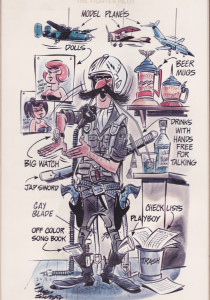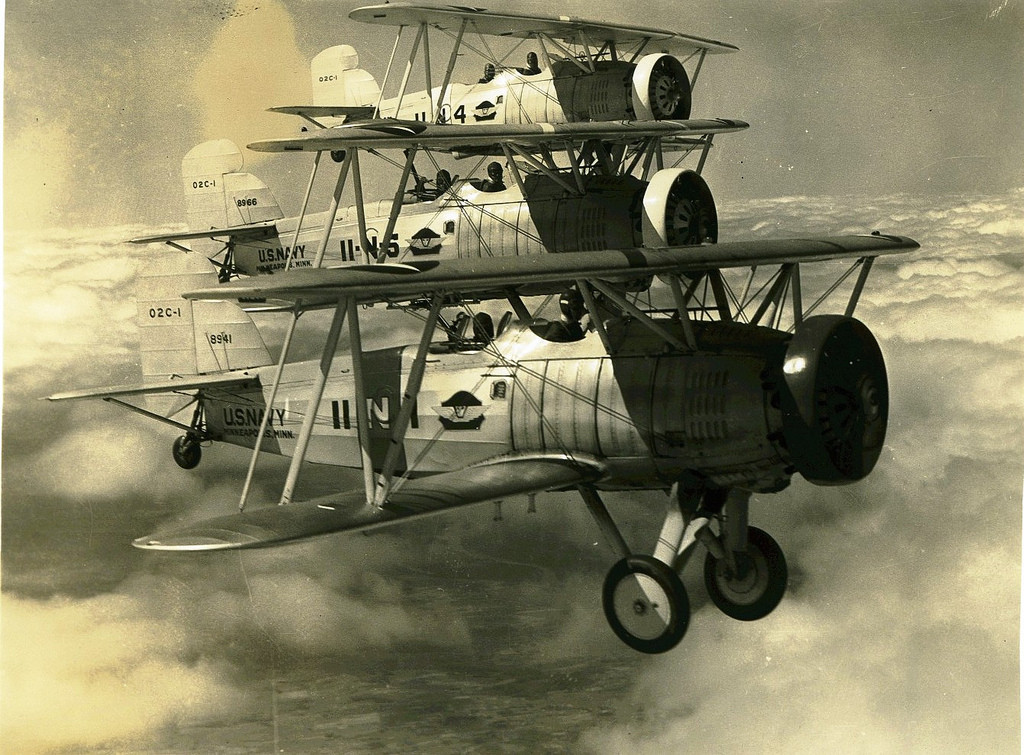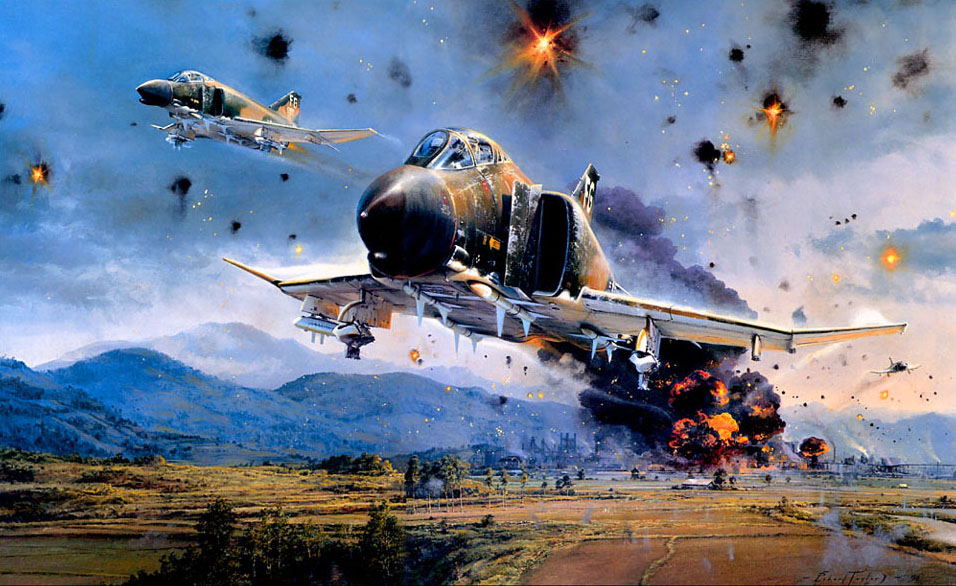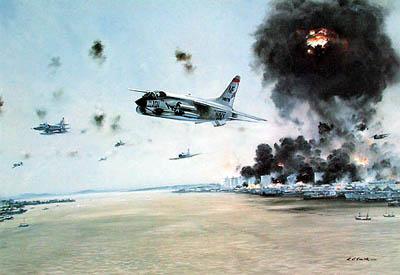Blown Slick Series #2
The first post for the Blown Slick series made the point that the series is about attack – missions and pilots, so you might ask why “fighter pilots?” Words in this case can deceive. Please read till the end. Terminology needs to be addressed so the series can move on.
“Say what you will about him: arrogant, cocky, boisterous, and a fun loving fool to boot. He has earned his place in the sun. Across the span of 95 years he has given his country some of its proudest moments and most cherished military traditions. But fame is short-lived and little the world remembers.
boot. He has earned his place in the sun. Across the span of 95 years he has given his country some of its proudest moments and most cherished military traditions. But fame is short-lived and little the world remembers.
Almost forgotten are the 1400 fighter pilots who stood alone against the might of Hitler’s Germany during the dark summer of 1940 and gave, in the words of Winston Churchill, England “It’s finest hour.” Gone from the hardstands at Duxford are the 51’s with their checkerboard noses that terrorized the finest fighters the Luftwaffe had.
Dimly remembered, the Fourth Fighter Group that gave Americans some of their few proud moments in the skies over Korea.
How fresh in recall are the Air Commandos who valiantly struck the VC with their aging “Skyraiders” in the rain and blood soaked valley called A-Shau? And how long will be remembered the “Phantoms” and “Thuds” over “Route Pack Six” and the flack-filled skies over Hanoi?
Barrel Roll, Steel Tiger, Tally Ho. So here’s a “Nickel on the Grass” to you, my friend and your spirit, enthusiasm, sacrifice, and courage–but most of all, to your friendship. Yours is a dying breed and when you are gone, the world will be a lesser place!?”
The above with cartoon by an unknown author appeared in a 1968 special edition of the Grumman Horizons magazine (Volume 8 Number 1)entitled Dogfighters Are In Close! Special Issue: Our race for a better MiG-killer.
There were five major stories – one from a Grumman VP discussing the need for a new air-air aircraft with a good segment on current design including Soviet emphasis on “point defense; two by senior Air Force MiG killers; and two by senior Naval Aviators, one a CAG and the other the first F-8 MiG killer. This was essentially pre-TOPGUN and the focus of the magazine and articles obvious. But take a look at the quote above beginning right under the picture – Skyraiders, Thuds, and Route Pack Six is refering not to air-air but the air-ground attack guys and mission under the umbrella of fighter pilot. And lets face it – the Air Force, Tactical Air Command, and the designation of all tactical fast movers to Tactical Fighter Squadrons (TFS) has existed forever.
Only the US Navy airwings designated squadrons by mission (VA and VF) and indeed drove aircraft design by that context. [F-8 Crusader, F-4 Phantom vs, A-1 Skyraider, A-4 Skyhawk, A-6 Intruder, and A-7 Corsair. (Note A-7D’s for the Air Force were in Tactical Fighter Squadrons, the A-10’s of today are in TFS)].
Navy practice stems from earliest days with the first Squadrons on the Langley and Saratoga with VF, VB (for dive bombers) and VT (for torpedo bomber), but design desires for multi-role aircraft is most evident. The late 1920’s Curtis F8C-1/2 Falcon was intended as a two seat fighter (with rear gunner) that could maneuver with single seat fighters, plus dive bomb and conduct scouting or observation missions.
Variants of the original Falcon were used by the Army Air Corps, Marines, and Navy and was the first fighter-bomber, if you will, named Helldiver. It was featured in multiple films including the attack on King Kong.
Thus while the term fighter pilot spun from the change from pursuit pilot terminology of WWI and WWII (and a/c designation, I.e., P-51 and as of 1948 F-51), the context of multi-role tactical aircraft has been apart of tactical aviation application since its beginning. The Navy bought the F-4 Phantom for fleet defense and fighter escort, but routinely armed it with bombs for major Alpha Strikes into North Vietnam. The Air Force intended the a/c as multi-role from the beginning. But interestingly enough an early evaluation of Air Force air-ground warfare – the Graham Report – recognized that aircrew were over tasked and lacked proper training for the multitude of missions. From a PHD thesis on evolution of the Red Flag training concept after Vietnam:
Throughout the Vietnam War, Air Force officers developed new ways of employing the aircraft they flew. Many pilots, tasked to accomplish many types of missions, could not become proficient in any of them. Aircraft designed for a singular purpose (air-to-air intercepts, nuclear delivery, or deep interdiction) and their crews performed air-to-air missions one day, only to be sent against ground targets the next. One squadron might perform an Iron Hand mission to protect a strike package and the next day be the strike package. Fighter pilots in many units became jacks of many trades and masters of none. Tactical Air Command recognized the need for pilots to specialize in one mission set…
One answer was creation of “designed operational capability” statements, called DOC statements for short, which allowed a fighter squadron to focus on one primary mission. DOC statements detailed the primary and secondary mission a fighter squadron was capable of accomplishing and thus allowed more senior planners to easily task squadrons for particular missions. By 1972 you could tell the primary mission of an F-4 squadron by its base in Thailand. For example the air-air mission was focused out of Udorn and Ubon, home of the 8th Tac Fighter Wing was lead for precision-guided bombing.
While air-air is the mark of the fighter pilot, triple ace General Robin Olds noted in his article in the Grumman magazine The Lessons of Clobber College:
The MiG pilots are a lot better than the average German pilot toward the end of WWII….Sometimes, when they’ve forced us to jettison our bombs before reaching the target, we’ve had to go in and teach them a lesson or clear them out. But our basic job over there is to bomb targets, not chase MiGs. If they happen to get in the way, so much the worse for them.
Strike on Thai Nguyen Steel mills, 30 March 1967
Olds received an Air Force Cross not for his four MiG kills (added to 12 from WWII) but for leading the 11 August 1967 strike against the Paul Doumer Bridge, a major north-south transportation link on Hanoi’s Red River. James Bond Stockdale as Commanding Officer of VF-51 led the first strike against North Vietnam – operation Pierce Arrow – in his F-8 Crusader armed with rockets and guns. The strike took advantage of the A-1 Skyraiders ability to carry a heavy load and the attack pilot skill, bomb load and maneuverability of the A-4 Skyhawk, along with speed and maneuverability of the Crusader to create a co-ordinated attack on the Vinh petroleum storage.
Operation “Pierce Arrow” against Vinh oil storage on 5 August 1964.
Air power is the theoretical and eventual conceptual application that comprises the application of military strategy and strategic theory to the realm of actual aerial warfare via strike warfare tactics, techniques and procedures. It is the act of achieving strategic effect via the air in the context of national interest and power projection and represents a complex operating environment that has been subjected to considerable debate. Air power contributes to compounded strategic effect via annihilation, attrition, and paralysis, where paralysis is the aim to disrupt, disable, and degrade an adversary’s physical, mental, and ultimately moral capacities, seeking to minimize destruction without precluding such action. Strike Warfare is the use of tactical aircraft and/or cruise missiles against land targets in an offensive power projection role and in combination with other expeditionary forces. Current practice primarily employs use of precision guided weapons. It includes attack on both key enemy infrastructure/command and control elements and also support of tactical objectives for ground combat units. Traditional Strike Warfare or Fast Mover Air Combat Missions include Air-to-air, Air-to-surface to include both land attack and ship attack, Intelligence, Surveillance and Reconnaissance (ISR), and Electronic Attack.
No matter what you call them, no matter the terminology – fighter aircraft, fighter-bomber, multi-role fighter, strike fighter, or attack aircraft, in application of airpower, all may have better or worse capabilities in one element over another, but in the end they must be capable of playing out that role in supporting the overall mission.
Air-air, its what you do going into and out from the target. Ed Rasimus, Fighter Pilot







